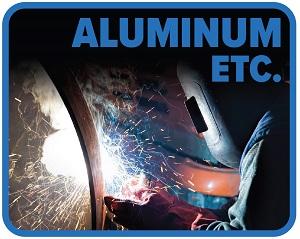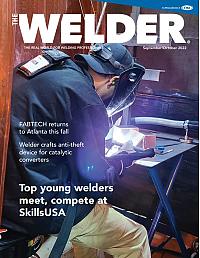Industrial Systems and Manufacturing Instructor
- FMA
- The Fabricator
- FABTECH
- Canadian Metalworking
Categories
- Additive Manufacturing
- Aluminum Welding
- Arc Welding
- Assembly and Joining
- Automation and Robotics
- Bending and Forming
- Consumables
- Cutting and Weld Prep
- Electric Vehicles
- En Español
- Finishing
- Hydroforming
- Laser Cutting
- Laser Welding
- Machining
- Manufacturing Software
- Materials Handling
- Metals/Materials
- Oxyfuel Cutting
- Plasma Cutting
- Power Tools
- Punching and Other Holemaking
- Roll Forming
- Safety
- Sawing
- Shearing
- Shop Management
- Testing and Measuring
- Tube and Pipe Fabrication
- Tube and Pipe Production
- Waterjet Cutting
Industry Directory
Webcasts
Podcasts
FAB 40
Advertise
Subscribe
Account Login
Search
Aluminum Etc.: High school skilled trades centers no longer for difficult teens
- By Gina Cutts
- September 29, 2022
- Article
- Aluminum Welding
High school vocational skills centers–typically referred to as trade schools–offer current industry standard skills and career readiness exposure to their students. These skills and exposure have not gone unnoticed by employers, young adults, and their parents.
Thirty years ago, vocational high schools might have been known as, to put it nicely, the place you sent “difficult” or “special circumstance” teens for three hours of their school day. And warranted or not, they had a reputation.
However, today’s trade schools are earning their reputation as a viable alternative to college–heck, even as the smarter choice–for students wanting to gain experience in a technical field that interests them. Career and technical education (CTE) programs have become more attractive to students because it allows them to learn a specific trade like welding and find out if it is a career they would enjoy.
While there is still a push from high school advisors and counselors for teens to attend college or university, students have discovered alternatives in technical fields after high school, often with the encouragement and support of their families. Students are now more aware than ever of the potential student loan debt that they can be saddled with. Some no longer want to risk taking out loans, graduating with debt and a possible job upon completion of college.
The benefits of such programs are plentiful. These CTE programs are free for students enrolled in participating school districts. Community businesses often work to help the programs succeed, such as by participating in a program’s advisory committee.
Industry leaders can help shape curriculum geared toward current industry standard skills and employability behavior. Recognized industry experts end up teaching the next generation of skilled tradesmen and tradeswomen.
Upon high school and CTE program graduation, some students will be actively recruited for union apprenticeships. If they decide to go right to work, the student is already familiar with the equipment and job requirements, minimizing the training a new hire typically needs for a smoother transition into the workforce.
If college is the next stop for these students, oftentimes an articulation agreement between schools is in place so a student can earn college credit for their time at a vocational trade school. That means trade school students earning math, science, English, and sometimes arts credits have those credits count toward graduation requirements. This, in turn, can provide substantial tuition savings.
Overall, these programs are a win-win for the students, colleges, businesses, and unions.
About the Author

About the Publication
subscribe now

The Welder, formerly known as Practical Welding Today, is a showcase of the real people who make the products we use and work with every day. This magazine has served the welding community in North America well for more than 20 years.
start your free subscription- Stay connected from anywhere

Easily access valuable industry resources now with full access to the digital edition of The Fabricator.

Easily access valuable industry resources now with full access to the digital edition of The Welder.

Easily access valuable industry resources now with full access to the digital edition of The Tube and Pipe Journal.
- Podcasting
- Podcast:
- The Fabricator Podcast
- Published:
- 04/16/2024
- Running Time:
- 63:29
In this episode of The Fabricator Podcast, Caleb Chamberlain, co-founder and CEO of OSH Cut, discusses his company’s...
- Trending Articles
Sheffield Forgemasters makes global leap in welding technology

ESAB unveils Texas facility renovation

Engine-driven welding machines include integrated air compressors

How welders can stay safe during grinding

The impact of sine and square waves in aluminum AC welding, Part I

- Industry Events
16th Annual Safety Conference
- April 30 - May 1, 2024
- Elgin,
Pipe and Tube Conference
- May 21 - 22, 2024
- Omaha, NE
World-Class Roll Forming Workshop
- June 5 - 6, 2024
- Louisville, KY
Advanced Laser Application Workshop
- June 25 - 27, 2024
- Novi, MI




























